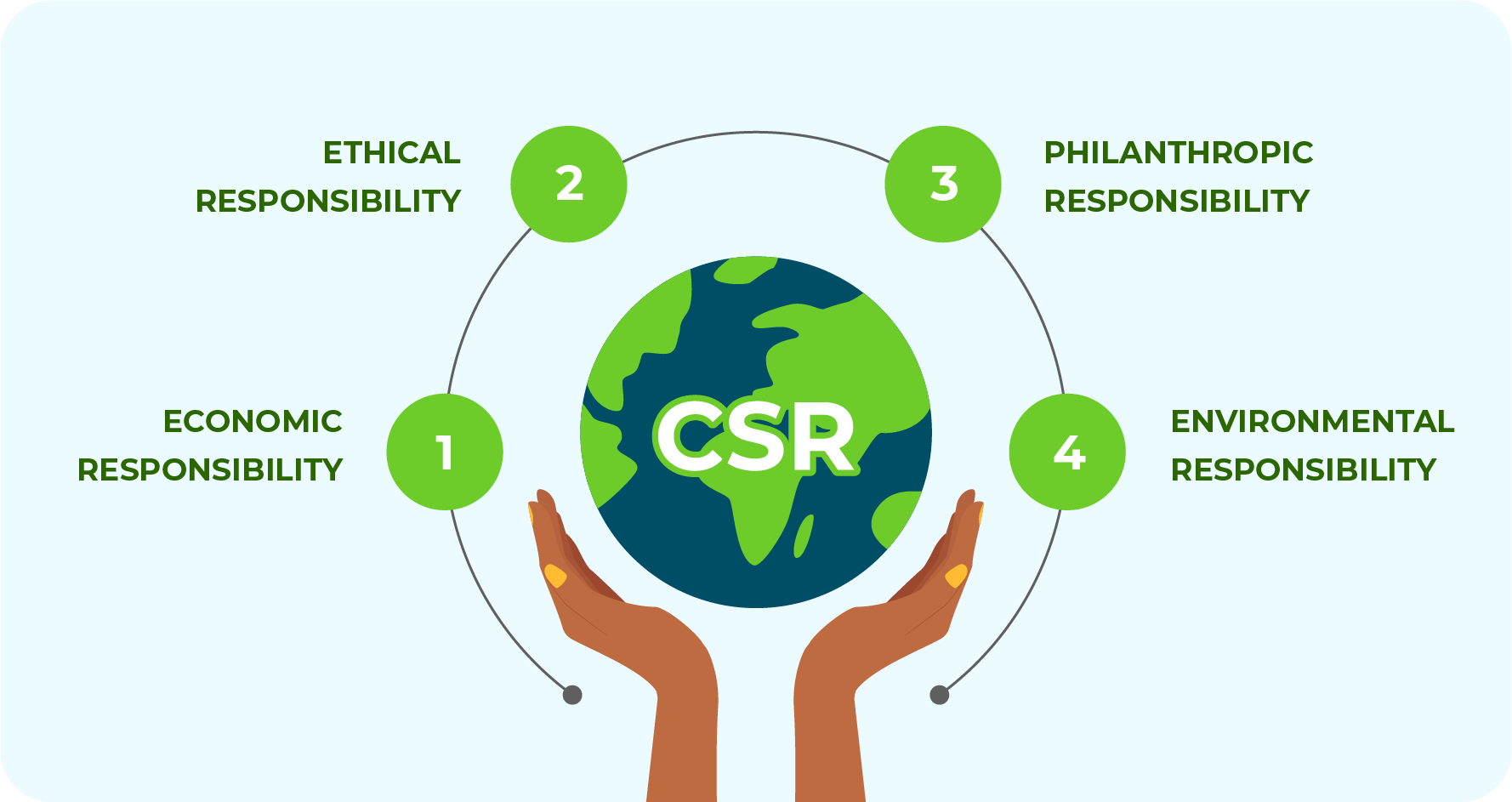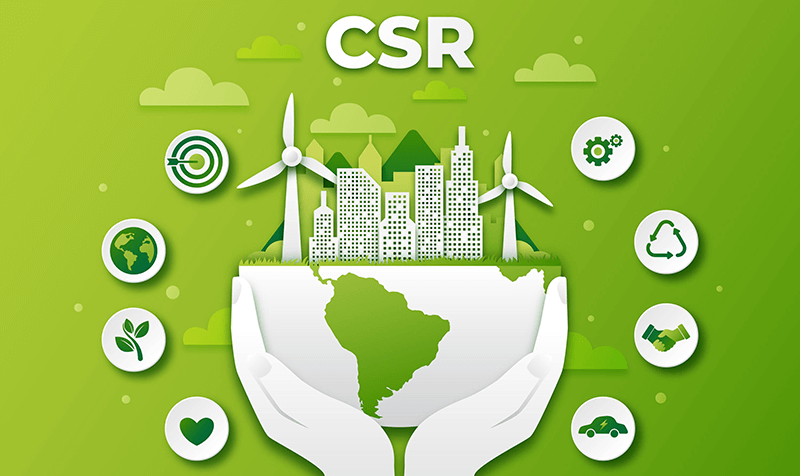Building Corporate Social Responsibility Programs
Creating sustainable impact for business and society
The Evolution of Corporate Social Responsibility
Corporate Social Responsibility (CSR) has evolved significantly over the past decades, transforming from basic philanthropy to strategic business initiatives that create shared value. Organizations today recognize that their responsibilities extend beyond shareholders to a broader ecosystem of stakeholders including employees, customers, communities, and the environment.
This shift reflects a growing understanding that businesses do not operate in isolation from society but are integral parts of social systems. At Al Mithaq Institute, our programs in Business Administration and Sustainability emphasize this interconnected perspective, preparing professionals to develop CSR initiatives that address social challenges while supporting long-term business objectives.
Core Elements of Effective CSR Programs
- 1
Strategic Alignment: Successful CSR initiatives align with the organization's core values, mission, and business strategy, creating authentic programs that leverage the company's unique capabilities.
- 2
Stakeholder Engagement: Effective programs actively involve key stakeholders—employees, customers, communities, and partners—in both planning and implementation phases.
- 3
Material Impact: Focusing on issues where the organization can make a significant and measurable difference ensures resources are allocated effectively.
- 4
Transparency and Accountability: Establishing clear metrics, reporting mechanisms, and governance structures builds trust and demonstrates commitment.
- 5
Long-term Commitment: Sustainable CSR programs require ongoing investment and adaptation rather than short-term projects or one-time donations.
Building a Framework for CSR Implementation
Developing an effective CSR program requires a structured approach that moves from strategic planning to implementation and evaluation. The following framework provides a roadmap for organizations at any stage of their CSR journey:
CSR Program Development Framework
-
Phase 1: Assessment and Strategy Development
- Conduct materiality assessment to identify key social and environmental issues relevant to your business
- Map stakeholder expectations and priorities
- Assess organizational capabilities and resources
- Define clear objectives and vision for your CSR program
- Develop a strategic plan that aligns social impact with business goals
-
Phase 2: Program Design and Planning
- Define specific initiatives and projects within your focus areas
- Establish metrics and KPIs to measure success
- Develop implementation timelines and resource allocation plans
- Create governance structures and assign responsibilities
- Design stakeholder engagement mechanisms
-
Phase 3: Implementation and Engagement
- Launch pilot initiatives to test approaches
- Build internal capacity and provide necessary training
- Engage employees as CSR ambassadors
- Develop partnerships with NGOs, government agencies, or other businesses
- Implement communication strategies to share progress with stakeholders
-
Phase 4: Measurement and Reporting
- Track performance against established metrics
- Conduct impact assessments to evaluate social and business outcomes
- Prepare transparent sustainability or CSR reports
- Seek third-party verification where appropriate
- Communicate results to internal and external stakeholders
-
Phase 5: Review and Evolution
- Regularly review program effectiveness and relevance
- Gather feedback from beneficiaries and stakeholders
- Identify opportunities for improvement and scaling
- Adapt to changing social needs and business contexts
- Integrate learnings into strategic planning cycles
Case Study: Transforming CSR Through Strategic Integration
A leading regional financial institution transformed its approach to corporate social responsibility by aligning its CSR initiatives with its core business capabilities. Rather than simply making charitable donations, the company developed a comprehensive financial literacy program targeting underserved communities.
By leveraging their employees' expertise, they provided workshops, mentoring, and digital resources that helped community members develop essential financial management skills. This initiative not only created meaningful social impact but also expanded the company's customer base and enhanced their brand reputation. Over three years, the program reached more than 50,000 individuals and led to a 15% increase in new accounts from previously underbanked populations.
This case demonstrates how aligning CSR with business capabilities can create both social and business value.
Common Challenges in CSR Implementation
Despite growing recognition of CSR's importance, many organizations face challenges in building effective programs. Understanding these obstacles can help leaders develop more successful initiatives:
Securing Sustainable Funding
Many CSR initiatives struggle with inconsistent funding, particularly when viewed as peripheral to core business operations rather than strategic investments.
Measuring Impact
Organizations often find it challenging to establish meaningful metrics that effectively capture both the social and business impacts of their CSR programs.
Stakeholder Alignment
Balancing the sometimes conflicting expectations of different stakeholders requires careful prioritization and transparent communication.
Internal Integration
CSR initiatives often remain isolated from core business functions, limiting their effectiveness and sustainability over time.
Emerging Trends in Corporate Social Responsibility
The field of CSR continues to evolve rapidly, with several significant trends shaping future directions:
- Shared Value Creation: Moving beyond traditional CSR to business models that simultaneously create economic value and address social challenges.
- Strategic Integration: Embedding social responsibility throughout the organization rather than treating it as a separate function.
- Collaborative Ecosystems: Building cross-sector partnerships to address complex social issues that no single organization can solve alone.
- Technology-Enabled Impact: Leveraging digital technologies to scale CSR initiatives and measure their outcomes more effectively.
- Employee-Driven Programs: Engaging employees as active participants and decision-makers in CSR initiatives, increasing both impact and workforce engagement.
Developing CSR Expertise with Al Mithaq Institute
Al Mithaq Institute offers specialized training programs that equip professionals with the skills needed to develop and implement effective CSR strategies. Our courses in Business Administration, Sustainability and Renewable Energy, and Corporate Governance provide practical knowledge and frameworks for creating impactful corporate social responsibility initiatives.
Building a CSR Roadmap for Your Organization
Creating an effective CSR program is a journey that requires thoughtful planning and ongoing commitment. Here are key steps for organizations at different stages of CSR development:
For Organizations Beginning Their CSR Journey
- 1. Start with a materiality assessment to identify the social and environmental issues most relevant to your business and stakeholders.
- 2. Define clear objectives that align with your organization's values and capabilities.
- 3. Begin with focused initiatives where you can make a meaningful impact rather than trying to address too many issues.
- 4. Engage employees early to build internal support and leverage their expertise and passion.
- 5. Establish simple but meaningful metrics to track progress and demonstrate value.
For Organizations Looking to Enhance Existing Programs
- 1. Conduct a comprehensive review of current initiatives to assess their impact and alignment with strategic objectives.
- 2. Deepen stakeholder engagement by creating formal feedback mechanisms and collaborative planning processes.
- 3. Strengthen measurement systems to better capture social, environmental, and business outcomes.
- 4. Explore strategic partnerships that can extend your impact and bring complementary resources and expertise.
- 5. Integrate CSR more deeply into business operations, governance structures, and decision-making processes.
Conclusion
Building effective corporate social responsibility programs requires strategic vision, thoughtful planning, and consistent implementation. The most successful CSR initiatives create shared value—simultaneously addressing social challenges while supporting business objectives. By aligning social impact efforts with organizational capabilities and stakeholder expectations, companies can develop programs that deliver meaningful and sustainable results.
As the business landscape continues to evolve, CSR is increasingly becoming integrated into core strategy rather than treated as a peripheral activity. Organizations that recognize this shift and develop robust, authentic approaches to social responsibility are positioning themselves for long-term success in a world where business value and social value are increasingly interconnected.
For professionals looking to enhance their capabilities in this area, educational institutions like Al Mithaq Institute offer valuable programs that combine theoretical frameworks with practical applications. By developing the knowledge and skills required to build effective CSR programs, leaders can create initiatives that make a positive difference for both their organizations and society.
Frequently Asked Questions
How can small and medium enterprises (SMEs) develop effective CSR programs with limited resources?
SMEs can build impactful CSR programs by focusing on specific issues where they can make a meaningful difference, leveraging their unique local knowledge and relationships. Rather than attempting large-scale initiatives, smaller organizations can partner with community organizations, engage employees as volunteers, and integrate responsible practices into their core operations. The key is to align CSR efforts with business strengths and focus on quality of impact rather than quantity of initiatives.
What are the most effective ways to measure the impact of CSR programs?
Effective measurement combines quantitative metrics (e.g., number of beneficiaries, resource efficiency improvements) with qualitative assessments (e.g., stakeholder feedback, case studies). Organizations should develop both output metrics (immediate results) and outcome metrics (longer-term changes). Additionally, mapping CSR impacts to frameworks like the UN Sustainable Development Goals can provide structure to measurement efforts. The most sophisticated approaches also quantify the business value created through CSR, including employee engagement, customer loyalty, and risk reduction.
How can organizations ensure their CSR initiatives are perceived as authentic rather than merely performative?
Authenticity in CSR comes from genuine alignment between stated values and actual practices. Organizations should focus on issues that connect meaningfully to their business operations, demonstrate long-term commitment rather than short-term publicity, involve leadership visibly in CSR efforts, and be transparent about both successes and challenges. Engaging stakeholders in program design and implementation also enhances authenticity, as does ensuring that internal practices and policies support the same values promoted through external CSR initiatives.
What role should employees play in corporate social responsibility programs?
Employees should be central to CSR efforts, serving as both contributors and beneficiaries. Organizations can engage employees through volunteering programs, skills-based service opportunities, and mechanisms that allow them to provide input on CSR priorities. Employee-led CSR committees can increase ownership and relevance of initiatives. Additionally, involving employees in program design and implementation leverages their expertise and strengthens their connection to the organization's purpose. The most effective programs treat employees as CSR stakeholders, ensuring that workplace practices align with the values expressed through external initiatives.







